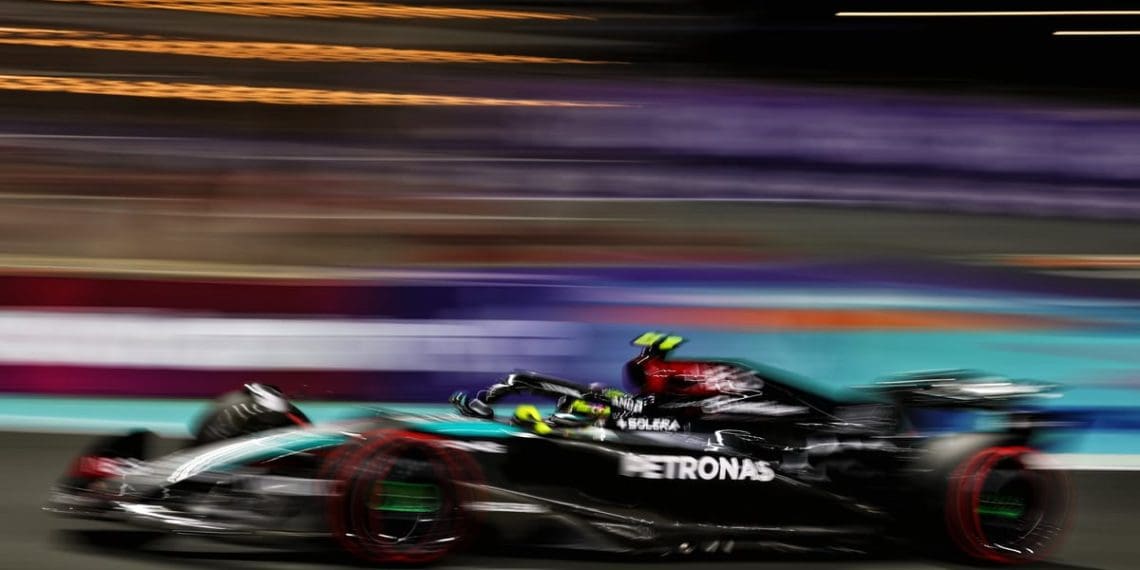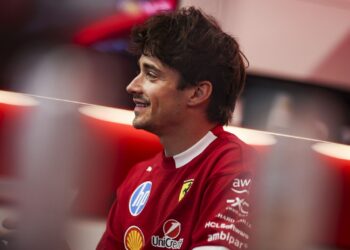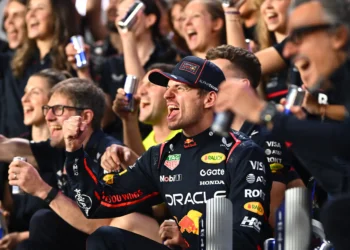After reading Mark Hughes’ analysis on Mercedes’ difficulties at the Saudi Arabian GP, it becomes clear where Lewis Hamilton’s bouncing issue stems from. The information provided by Hamilton sheds light on the amount of work Mercedes still needs to do to consistently compete at the front.
Hamilton stated: “We couldn’t solve the significant bouncing issue. We made adjustments overnight, and the car felt much better during earlier today’s FP3.” However, the issue resurfaced during qualifying, despite his attempts to resolve it through various setup changes.
While Hamilton’s comments may seem straightforward, they reveal crucial information. In hotter climates, a car that is on the brink of airflow separation problems will encounter even more difficulties. Additionally, heat reduces the amount of downforce generated by the car.
Previously, the main concern was the front wing, operating in close proximity to the ground. Occasionally, the rear wing was also affected, especially when the DRS system was closed. However, with the introduction of ground effect cars, the dynamics have completely shifted.
These new cars now derive approximately 75% of their downforce from the floor. Therefore, managing airflow separation is crucial during the early phase of floor design. Based on Hamilton’s comments, it seems that the car performed better during FP3 due to a higher rear wing level. However, this improvement had little to do with the wing itself, as it now contributes a smaller portion of the rear downforce. Instead, the improved performance can be attributed to the higher ride height caused by reduced downforce in the daytime heat.
During qualifying, the air temperature was two degrees cooler and the track temperature was 12 degrees cooler compared to FP3. These conditions led to an overall increase in downforce, resulting in a lower ride height for the car. The denser air also exacerbated any airflow separation issues on the floor, leading to more aggressive and prolonged bouncing.
As mentioned earlier, these cars require careful management of airflow separation during the initial phase of floor design. Although we often do not have a view of the floor, a comparison between the Red Bull and Mercedes floors is likely to reveal distinct design philosophies.










